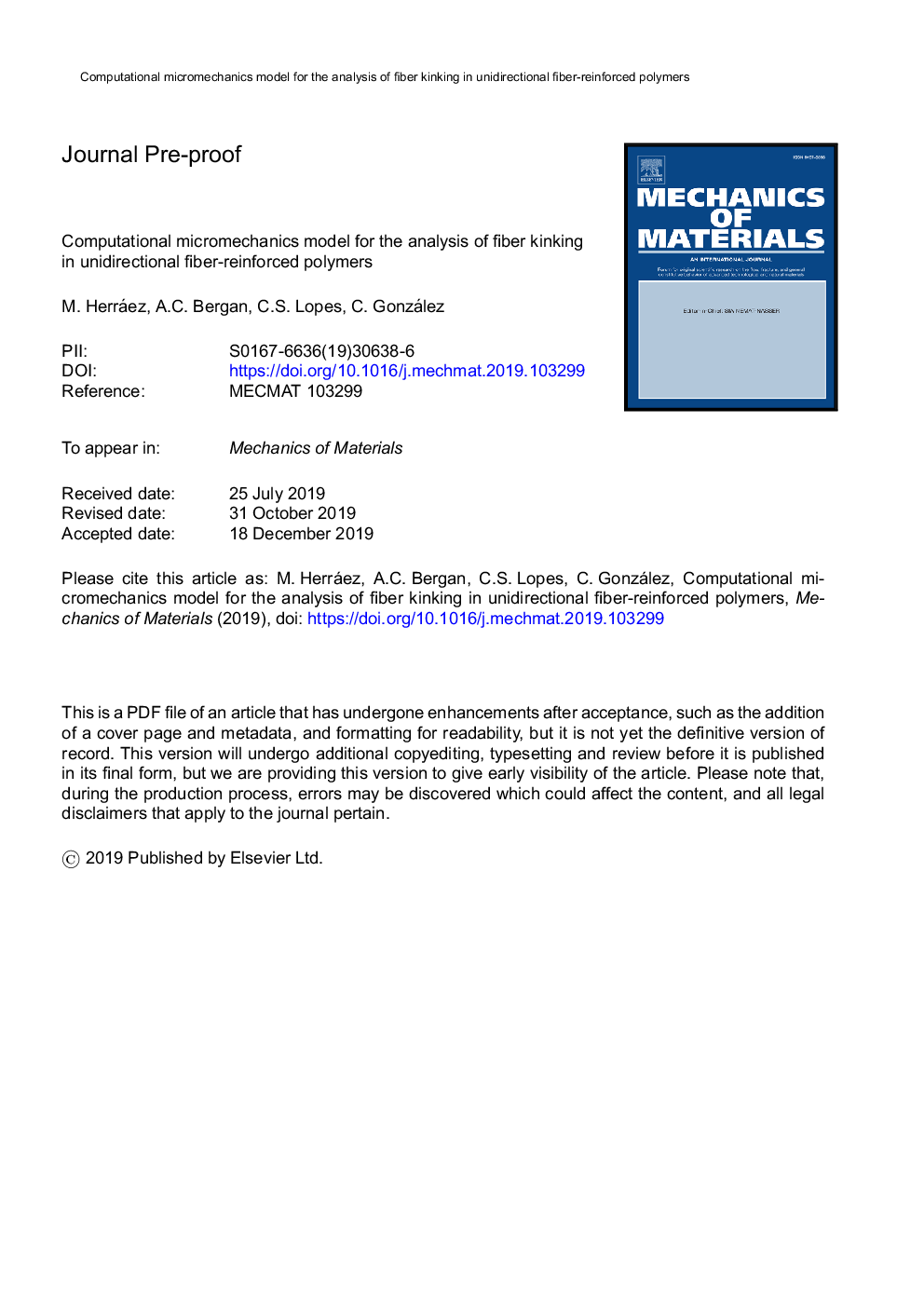| Article ID | Journal | Published Year | Pages | File Type |
|---|---|---|---|---|
| 13451990 | Mechanics of Materials | 2020 | 26 Pages |
Abstract
A computational micromechanics (CMM) model is developed to analyze fiber kinking, which is a failure mechanism that takes place in fiber-reinforced composites when they are loaded under longitudinal compression. The CMM model consists of a single AS4 carbon fiber with an initial misalignment embedded in an 8552 polymer matrix. The deformation of the model is governed by periodic boundary conditions (PBC). The relatively simple CMM model enables the evaluation of the role played by initial misalignment of the fiber, shear yielding of the matrix and fiber-matrix debonding. A novel microscale experimental technique devoted to the characterization of the longitudinal compressive strength of the fibers, Xcf, is developed. By exercising the model and comparing it with several models in the literature, the nonlinear shear response of the composite lamina is shown to play a fundamental role not only in the prediction of the compressive strength Xc, but also during the post-peak regime in terms of residual stress Ïr and fiber rotation Ï. Finally, the influence of the fiber-matrix interface damage (not considered in most other fiber kinking models) on the fiber kinking phenomenon is assessed through a parametric study.
Related Topics
Physical Sciences and Engineering
Engineering
Mechanical Engineering
Authors
M. Herráez, A.C. Bergan, C.S. Lopes, C. González,
